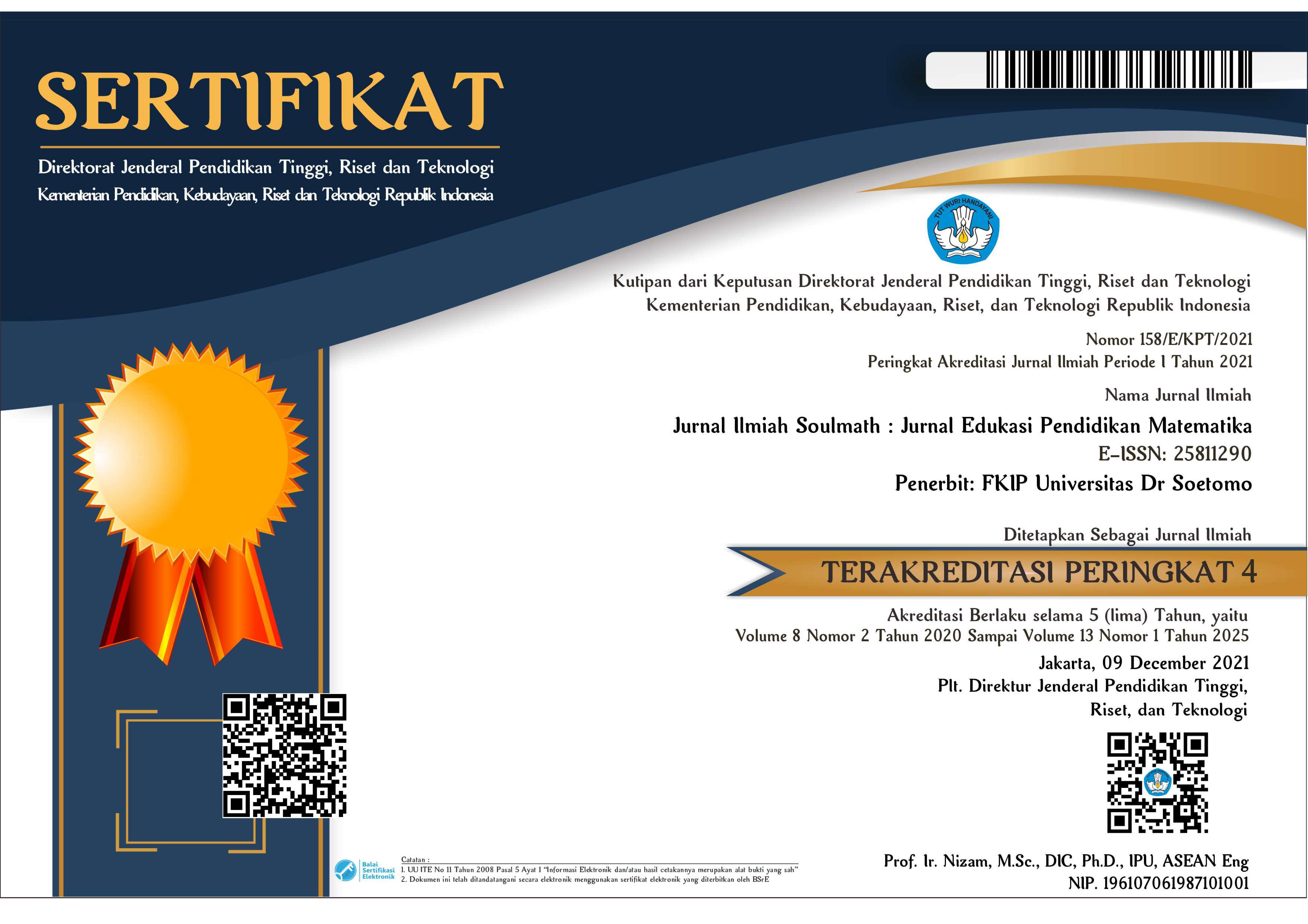Analisis Proses Penyelesaian Soal Matematika Pada Strategi Pembelajaran Tutor Sebaya Ditinjau Dari Kemampuan Mahasiswa
 Abstract views: 393
,
Abstract views: 393
,
 PDF downloads: 633
PDF downloads: 633
Abstract
Peer tutor learning model (peer teaching) is one alternative that can be applied to students or students in the teaching and learning process. The purpose of this study was to describe the process of solving mathematical problems by students on peer tutoring learning in terms of student abilities. The stages in the study included: (1) preparation of research instruments, in the form of questionnaires and tests, (2) validating questionnaire instruments and tests, (3) conducting research, (4) analyzing data, (5) peer examination, (6) triangulation, and (7) drawing conclusions. The research design used in this study is qualitative research. Based on the results of tests and interviews, there are three abilities of students, namely high, medium, and low. The three student abilities show that the process of solving student statistical material questions is quite good.
Downloads
References
[2] Isnaeni, Belajar Matematika. Jakarta: Rineka Cipta, 2004.
[3] I. Qudsi, “Pembelajaran Tutor Sebaya Materi Besaran Dan Satuan Fisika,” Dinamika, vol. 4, no. 3, pp. 1–10, 2014.
[4] A. M. Firmansyah and A. Rukmana, “Model Pembelajaran Tutor Sebaya Dalam Pendidikan Jasmani Terhadap Pembentukan Konsep Diri Siswa,” Mimb. Pendidik. Dasar, vol. 8, no. 1, pp. 7–14, 2017.
[5] N. P. Anggorowati, “Penerapan Model Pembelajaran Tutor Sebaya Pada Mata Pelajaran Sosiologi,” J. Komunitas, vol. 3, no. 1, pp. 103–120, 2011.
[6] N. S. Sukmadinata, Metode Penelitian Pendidikan. Bandung: Remaja Rosdakarya, 2010.
[7] Sugiyono, Metode Penelitian Kuantitatif, Kualitatif, dan R&D. Bandung: Alfabeta, 2011.
[8] N. Sudjana, Penilaian Hasil Proses Belajar Mengajar. Bandung: Remaja Rosdakarya, 2010.






